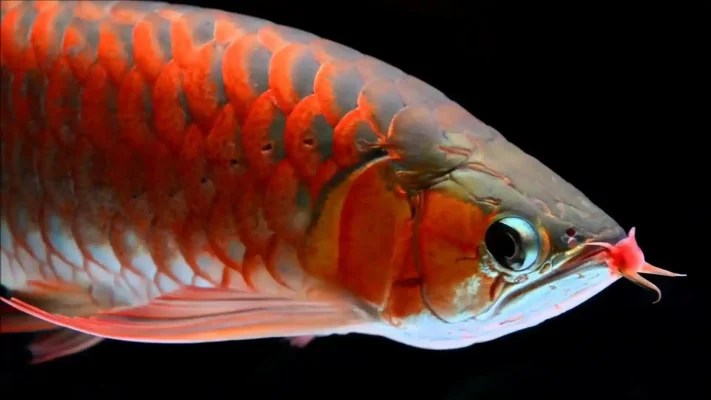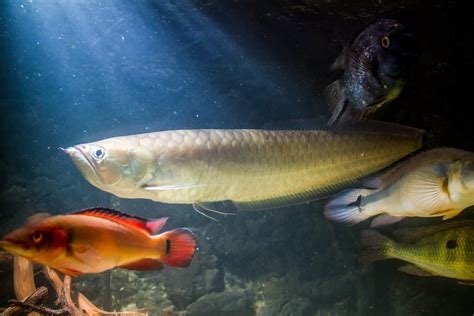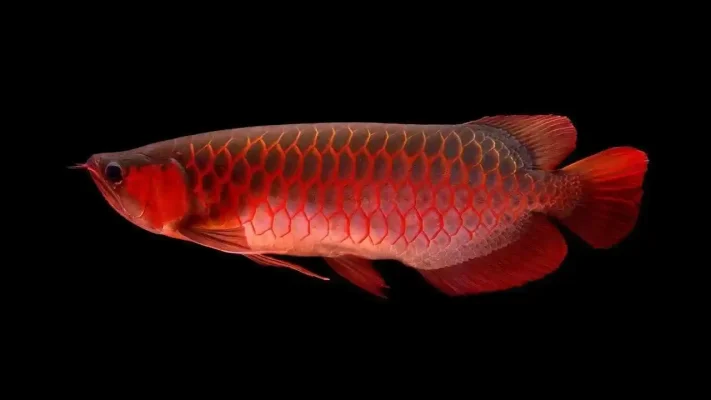Crossback Arowana Patterns: Understanding Their Unique Look
Crossback Arowana Patterns: Understanding Their Unique Look
The Crossback Arowana, also known as the Golden Arowana, is a highly sought-after fish for its striking golden scales and elegant movements. Known for its distinctive appearance and regal bearing, this aquatic marvel continues to be a prized possession among fish collectors and hobbyists. In this comprehensive guide, we’ll explore the intricacies of Crossback Arowana patterns, delving into what makes them so unique and sought-after.
Have you ever gazed into an aquarium and been captivated by the shimmering scales of a Crossback Arowana? These magnificent creatures are more than just fish – they’re living works of art! In fact, a rare platinum Crossback Arowana sold for a jaw-dropping $300,000 in 2023, setting a new record in the aquarium world. Today, we’re diving deep into the mesmerizing patterns that make Crossback Arowanas so unique and sought-after. Get ready to explore the intricate world of these aquatic marvels!
The Allure of Crossback Arowana Patterns
The Crossback Arowana, scientifically known as Scleropages formosus, is a species of freshwater fish native to Southeast Asia. It is prized for its vibrant golden color and distinctive cross-shaped markings on its back. These markings, combined with its sleek body and powerful fins, make it a captivating sight in any aquarium.

These fish typically display a series of dark, overlapping scales that create a criss-cross or net-like pattern across their backs, hence the name “Crossback.”
“The Crossback Arowana’s pattern is like nature’s own masterpiece, a living, swimming work of art.” – Anonymous Aquarist
Understanding Crossback Arowana Patterns
The unique look of Crossback Arowanas is primarily determined by their genetic makeup. However, several factors contribute to the development and quality of their patterns:
- Genetics: The primary driver of pattern formation
- Diet: Proper nutrition enhances color and pattern clarity
- Water Quality: Clean, well-maintained water promotes healthier scales and clearer patterns
- Lighting: Appropriate lighting can highlight the intricacies of the pattern
- Age: Patterns may change slightly as the fish matures
| Characteristic | Description |
|---|---|
| Body Shape | Slender and elongated |
| Color | Golden, ranging from bright yellow to deep golden brown |
| Dorsal Fin | Distinctive, running along the back |
| Cross-Shaped Markings | Dark, wavy lines creating a unique pattern |
Key Takeaways:
- Crossback patterns are primarily genetic
- Environmental factors can influence pattern quality
- Proper care is essential for maintaining vibrant patterns.

Types of Crossback Arowana Patterns
While each Crossback Arowana is unique, there are some commonly recognized pattern types:
- Full Crossback: The pattern covers the entire back of the fish
- Partial Crossback: The pattern is present but doesn’t cover the entire back
- High Contrast: Sharp distinction between the dark pattern and lighter base color
- Low Contrast: More subtle patterning with less stark color differences
It’s important to note that the terminology for these patterns may vary among breeders and enthusiasts.
Behavior and Habitat
In the wild, Crossback Arowanas inhabit slow-moving rivers and streams with dense vegetation. They are primarily nocturnal, feeding on small fish, crustaceans, and insects. In captivity, they require a large tank with plenty of swimming space and hiding places. They are known to be aggressive towards other fish, especially when it comes to food, so it is essential to provide a tank with sufficient hiding spots to avoid conflicts. Asian Arowana Varieties
Breeding and Care
Breeding Crossback Arowanas is a challenging task, as they are difficult to spawn in captivity. However, with proper care and attention, they can be successfully bred. The ideal breeding environment includes a large tank with a soft, acidic water pH. The water temperature should be maintained between 77°F and 82°F (25°C and 28°C). The fish require a diet rich in protein and fatty acids, which can be provided through live or frozen foods. Arowana Lifespan
Diet and Nutrition
In the wild, Crossback Arowanas feed on a variety of small fish, crustaceans, and insects. In captivity, they require a diet that mimics their natural diet. This includes a combination of live and frozen foods such as bloodworms, brine shrimp, and small fish. It is essential to provide a varied diet to ensure the fish receive all the necessary nutrients.
Arowana Health and Diseases
Crossback Arowanas are susceptible to various health issues, including bacterial infections, parasites, and nutritional deficiencies. Regular water changes and a balanced diet can help prevent many of these problems. It is also crucial to monitor the fish’s behavior and appearance for any signs of illness.
The Science Behind the Patterns
The intricate patterns of Crossback Arowanas are the result of complex biological processes. Melanin, the pigment responsible for dark coloration in many animals, plays a crucial role in forming these patterns.
Factor |
Role in Pattern Formation |
|---|---|
| Melanin | Primary pigment for dark coloration |
| Iridophores | Cells that produce reflective pigments |
| Chromatophores | Cells that can change color |
| Genetic Expression | Determines pattern layout |
| Environmental Factors | Can influence pattern intensity |

Best Place to Buy Arowana Online
Caring for Your Crossback Arowana
To maintain the vibrant patterns of your Crossback Arowana, consider the following care tips:
- Provide a spacious tank (minimum 250 gallons for adult fish)
- Maintain water temperature between 24-30°C (75-86°F)
- Ensure excellent water quality with regular changes and filtration
- Offer a varied diet rich in protein
- Use appropriate lighting to enhance pattern visibility
The Value of Crossback Arowanas
Crossback Arowanas are highly valued in the aquarium trade, with prices varying based on pattern quality, size, and overall health. Some exceptional specimens have been known to fetch prices in the thousands of dollars.
“A well-cared-for Crossback Arowana is not just a pet, it’s an investment in living art.” – Experienced Arowana Breeder

Key Takeaways
- Physical Characteristics: The Crossback Arowana has a slender body with a pointed snout and distinctive dorsal fin.
- Behavior and Habitat: They inhabit slow-moving rivers and streams in the wild and require a large tank with plenty of swimming space and hiding places in captivity.
- Breeding and Care: They are challenging to breed in captivity, requiring a specific environment and diet.
- Diet and Nutrition: They require a diet rich in protein and fatty acids, including live and frozen foods.
- Health and Diseases: They are susceptible to various health issues, which can be prevented through regular water changes and a balanced diet.
- How big do Crossback Arowanas get? Crossback Arowanas can grow up to 3 feet (90 cm) in length in captivity.
- How long do Crossback Arowanas live? With proper care, these fish can live for 20 years or more.
- Are Crossback Arowanas difficult to keep? They require specialized care and are generally recommended for experienced aquarists.
- Can Crossback Arowanas live with other fish? They are predatory and may eat smaller fish. They’re best kept alone or with other large, non-aggressive species.
- How often should I feed my Crossback Arowana? Adult Crossback Arowanas typically eat 2-3 times per week.
- Can Crossback Arowanas change color? While their base color remains relatively stable, stress or changes in environment can affect the intensity of their patterns.
- Are Crossback Arowanas endangered? Some Arowana species are endangered in the wild, but Crossback Arowanas are typically captive-bred for the aquarium trade.


 Deutsch
Deutsch